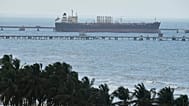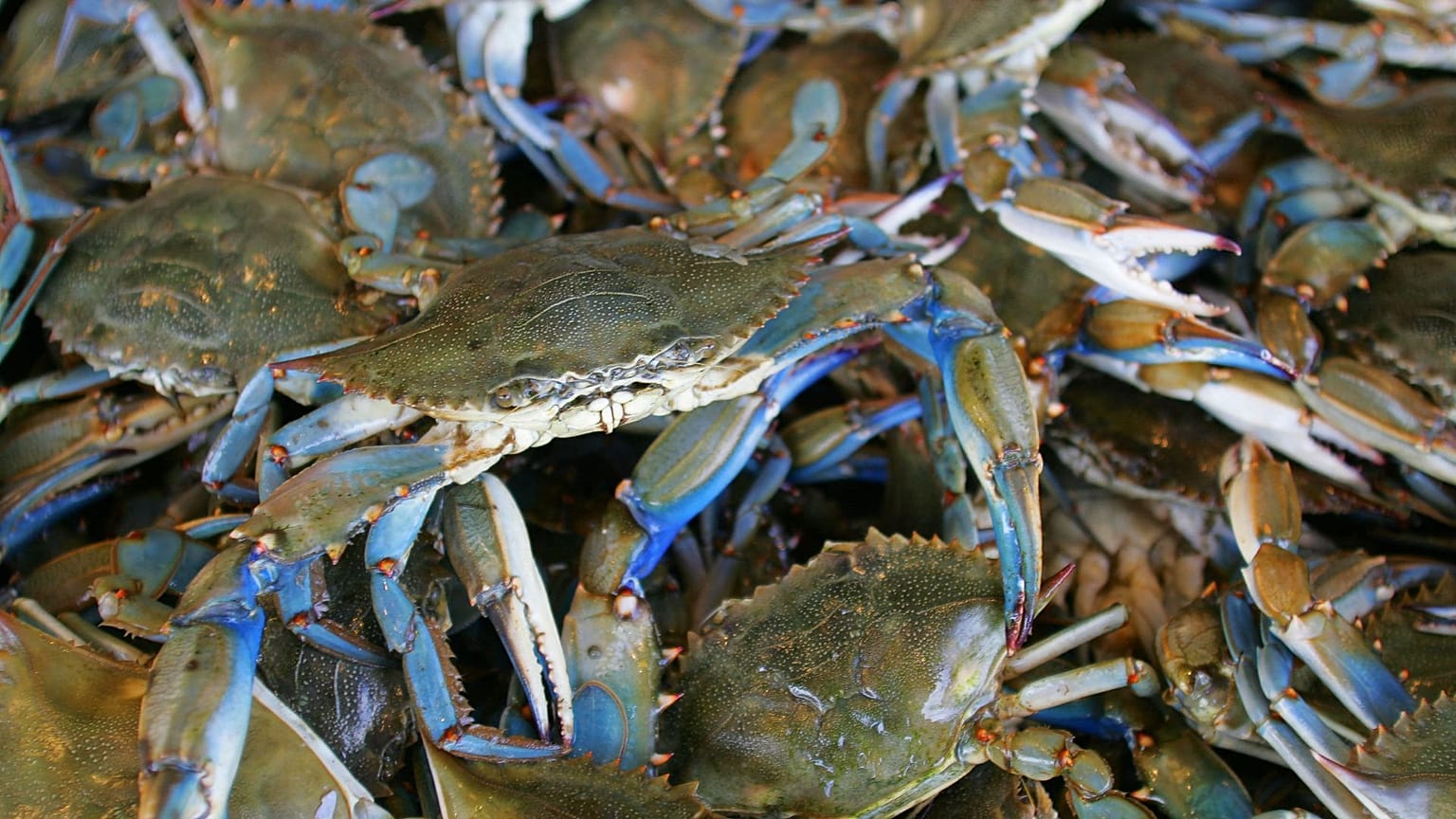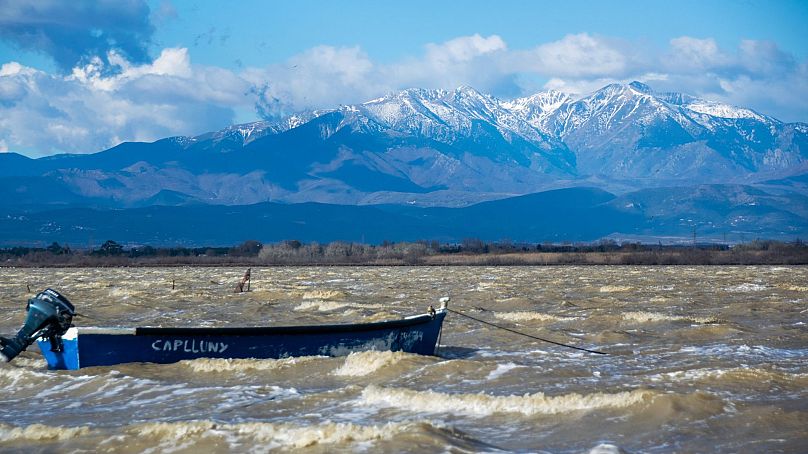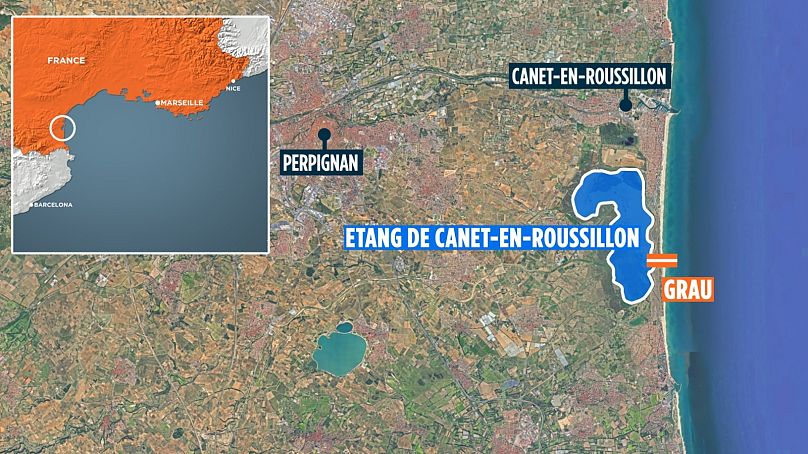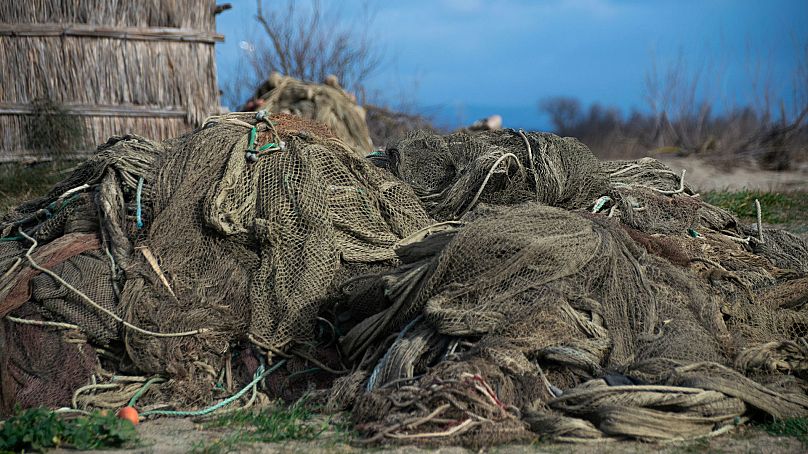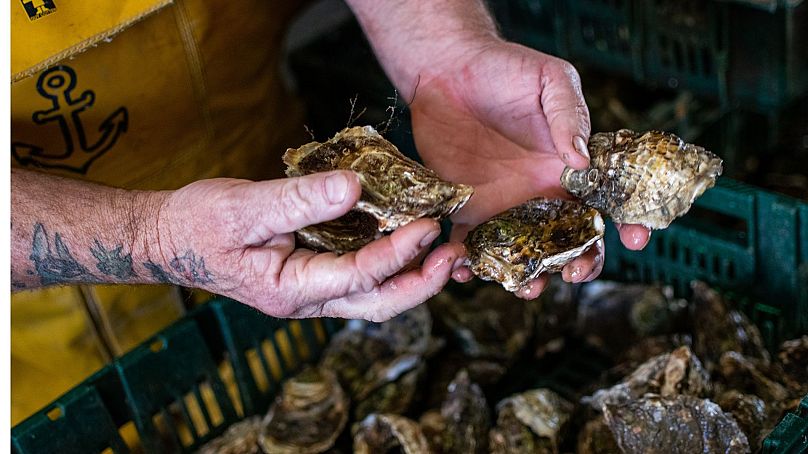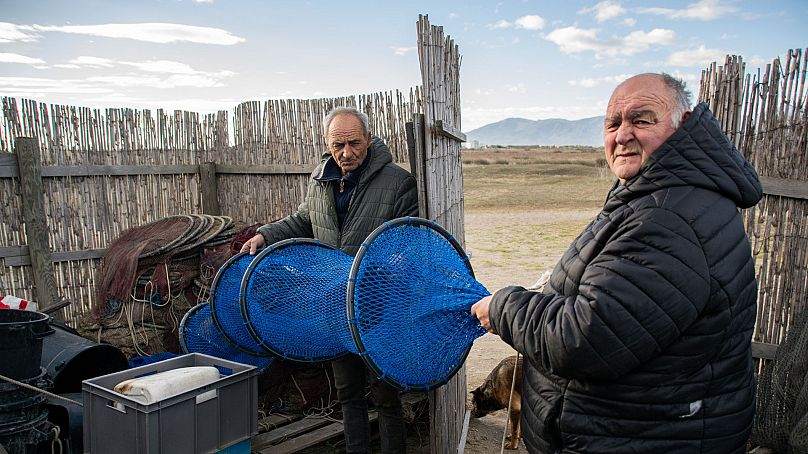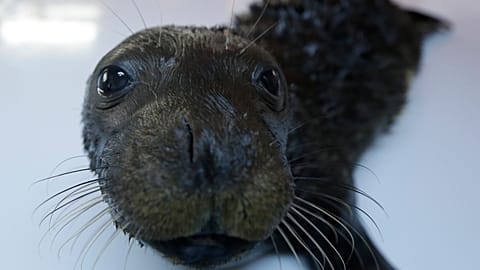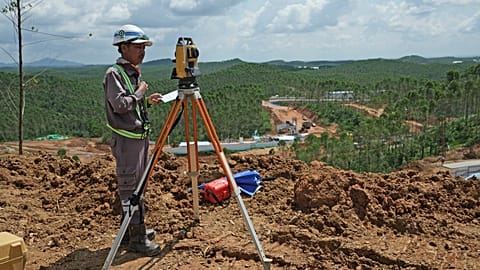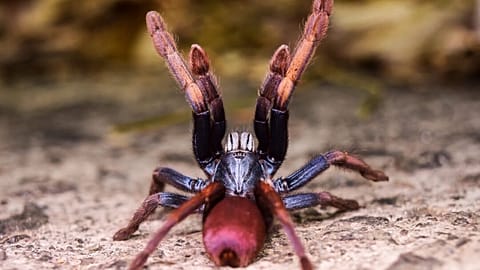The lagoon of Canet-en-Roussillon in the south of France has been invaded by a creature that devours everything in its path,
For the last three years, the Canet-en-Roussillon lagoon, in southern France, has been under invasion from a blue crab which devours almost everything in its path.
Scientists are trying to find the cause of the invastion, but for the time being the only way to keep the numbers under control is fishing. Since the crab tastes so good, local restaurant owners are considering putting it on the menu.
Two fishermen in Canet-en-Roussillon, Yves Rougé and Jean-Claude Pons, shelter in the back of their van while they wait to hand over their fishing records to the site manager. Outside, the northwest tramontane wind roars over the almost deserted fishermen's village.
Since the invasion began in 2020, the two friends have meticulously noted down the number of blue crabs they have caught. "We started seeing them in 2017, it's been five or six years since they've been here," explains Jean-Claude Pons. “We used to see one or two, then ten, and then it was kilos every day."
Pons has been an eel fisherman for more than 35 years. Today, he’s totally overwhelmed by the proliferation of this crustacean. Eels, fish, algae...the blue crab devours everything in its path.
When it settles somewhere, it threatens local biodiversity, especially as this swimming crab moves quickly and can travel 15 kilometres a day.
As a result, Yves Rougé and Jean-Claude Pons' eel fishing business has been at a standstill for two years.
“Every day, we used to catch six to eight baskets of crabs,” says Yves Rougé. “In August 2022, we were catching 600 kilos a day!” The crabs destroyed most of their eel nets, so they had to get new ones developed especially to be crab-resistant.
Why the blue crabs are in one lagoon but not another
Now sheltered in a hut, the fishermen hand over their records to the site manager, Roland Mivière. Jean-Claude Pons tells him that they have not yet caught any crabs this year. The crustacean, which goes underground when the temperature drops, has not yet emerged.
But this time last year, it was much more active. “I think it's the salt levels they don't like,” says the fisherman. The dry winter has lowered the level of the lagoon, which increases the salt content of the water.
The fishermen have multiple theories: "I am sure that there was no spawning this year," says Yves Rougé. “We should have seen some by now.” His teammate chimes in, "It has a two-year life expectancy, the big ones may have died and there has been no revival... or not yet.”
So far, Canet is the most affected lagoon, according to Roland Mivière. “Its only predator is the octopus, which like stones. Because the lagoons are muddy and sandy, there's none around to eat the crab.” The other lagoons of the French Mediterranean coast have so far been spared by the aggressively-spreading crustacean.
But Christophe Guinot, an oyster farmer in the nearby lagoon of Leucate, can’t stop himself from being "extremely worried".
As he greets his customers in his oyster shack on the edge of the 'grau' of Leucate, a narrow channel that connects the lagoon to the sea, he warns of the dangers of the species: "They are serial killers, they do not necessarily kill to eat. And they attack everything! Anything that swims, crawls, is buried, even algae..."
The impact on his oyster production is for the moment "not really noticeable". The crab is not very present in the lagoon of Leucate, even though the two lagoons are only fifteen kilometres apart. “Why is there nothing here?" asks the oyster farmer. “It's a mystery.”
How scientists are trying to help solve the blue crab mystery
"We're really lost, we're living one day at a time", sighs Jean-Claude Pons. Canet’s fishermen have had no income since the invasion. They say they "held out" for the launch of a scientific study in December 2022 to study the 'Callinectes Sapidus', this famous blue crab.
Some €400,000 of funding has been released over the last two years, of which €166,000 is dedicated to paying fishermen to supply crabs to the scientists. The study is looking at the behaviour and biology of the species, with the aim of bettering understand why this crab is only found in the lagoon of Canet-en-Roussillon.
“Invasive species are present in many places, but in Canet, the conditions are perfect for it to remain and proliferate," says Yves Desdevises, director of the Banyuls-sur-Mer oceanological observatory, which is responsible for studying the biology of the species. “There is a link with the salt levels of the water, they live very well in the sea, but they only really develop in low salt level areas.”
This is the common factor in all the places where it is a problem: the Ebro delta in Spain, the Palu and Biguglia lagoons in Corsica and the Canet-en-Roussillon lagoon in Occitanie. All have low levels of salt in their waters. But the scientist warns that the causes of the crab's development are always "multifactorial".
Whether it is a change in environmental conditions, a lack of predators or the absence of a parasite that regulates it in its original habitat on the American east coast, Yves Desdevises cannot yet say why it is proliferating in the Mediterranean. And why it prefers certain areas over others. The study should provide "interesting elements" within a year.
While waiting for the first results, the state is considering deploying octopuses at the exit of the 'graus' to help regulate the species. Yves Desdevises admits that, for the moment, the only solution is to fish for it: "It could be worth developing a commercial sector to heavily fish it. But the locals should already be eating it.”
Could blue crabs become a staple of the local diet?
In addition to its aggressiveness and voracity, this crab is particularly tasty.
"I made a crab soup, it was extraordinary", enthuses Jean Plouzennec, French Master Chef and head chef of the restaurant Les Arbousiers in Céret near the Spanish border.
In the heart of the Vallespirien inlands, Plouzennec walks through his kitchen, silent at this time of year. "It tastes like a mix of brown crab and spider crab, it's delicious a la plancha, it's very soft, and you can also stuff it.”
He regrets that the region does not have a "shellfish platter" culture. Mussels and oysters are the stars on this coastline. "We have to support the fishermen, find ways to make this crab more attractive," insists the chef.
The fishermen of Canet say that they have tried everything to arouse interest, but often the price at which they sold the crab was too low: "At the peak, we sold it for €2 per kilo, which is ridiculously low.” Yves Rougé agrees with the chef and the scientist: "This is not a crab region, only Asians used to buy it often.” And not for much more money, only at €3 per kilo.
"Fortunately, there is a scientific study, otherwise we would not have continued," sighs Jean-Claude Pons, pointing to the new nets developed to resist the claws of the blue crab. Most of those caught in previous years were dumped on the banks of the lagoon, before turning white in the sun.
"100% of the people who bought blue crabs from me were satisfied, and writing blue crab on their menu is a great touch," says Christophe Guinot, who believes that the crab could become commonplace in the local diet. "We need to promote it, we don't do it enough, there's inertia in the work field," he sighs.
"Why not launch a big blue crab festival?" he asks, imagining an event in the fishermen's village of Canet with planchas, cooking pots, grills and braziers.
This sounds like a neat solution to control the numbers while also helping the local fishing industry to survive.




